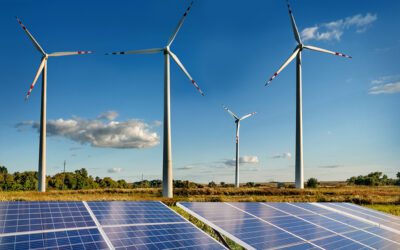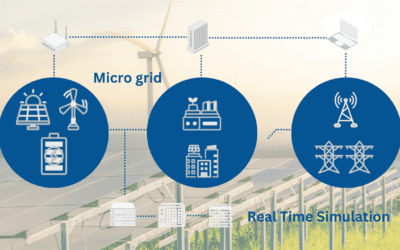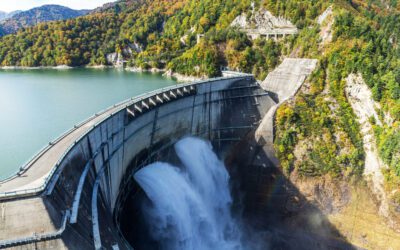Predictive Maintenance on Power Plants
Between all O&M activities, the plant components maintenance is typically the one with greater OPEX. Common maintenance approaches are the corrective and the preventive ones, as depicted in the graph below and according to EN13306. Corrective maintenance is a conventional strategy of running to failure and subsequently performing repair. It has the advantage of fully utilizing the component lifetime, but it is typically afflicted by long downtimes, with the risk of additional damages, and even catastrophic ones; furthermore, this kind of maintenance, by definition, cannot be scheduled. On the other hand, preventive maintenance has the goal of optimizing the operation costs by planning them. Preventive maintenance has the advantage of being schedulable, of allowing an efficient spare-part management and of a higher availability than corrective maintenance. It can be done in a pre-fixed time intervals, following the data-sheet info of the components (pre-determined maintenance), or it can be done trying to predict when it is necessary (predictive maintenance), using as inputs the data collected by means of condition monitoring. It can be defined as the ”continuous monitoring of system data to provide an accurate assessment of the health, or status, of a component or system and performing maintenance based on its observed health” [1]. It implies that system data are monitored and processed in real-time to detect changes in the technical assets conditions that represent deviations from the normal operational behavior. It is stated [2] that more than 90% of equipment failures are preceded by certain signs, conditions, or indications that a failure is going to occur [3].
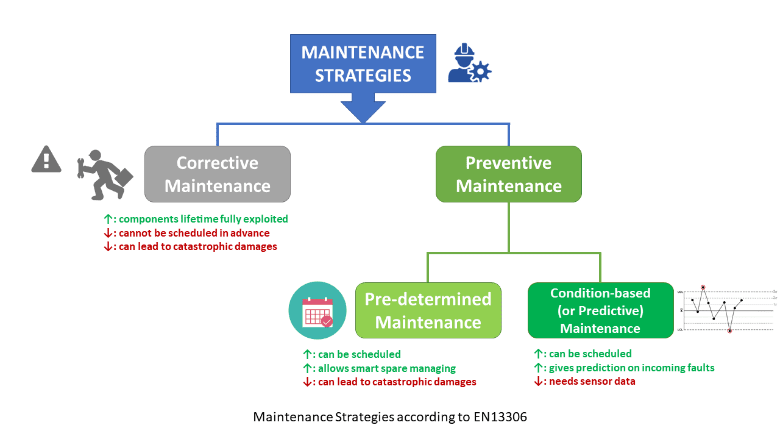
Let’s give some numbers!
Solar technologies:
according to [4], application of this kind of service may increase the annual revenue of a typical standard-performing fleet of 100 MW PV plants from 128 kE/year up to 240 kE/year and from 368 kE/year up to 948 kE/year for a low-performance PV portfolio. Considering a typical lifetime of 20 years, the cumulative impact will range from 2.5 ME to 20 ME.
But have no fear! You are lucky, because at i-EM we DO provide pv plants predictive services; predictive-related savings typically depend on the size of the plant, with an increase in the lost production ranging from 2-15%. Interested? Look here for details!
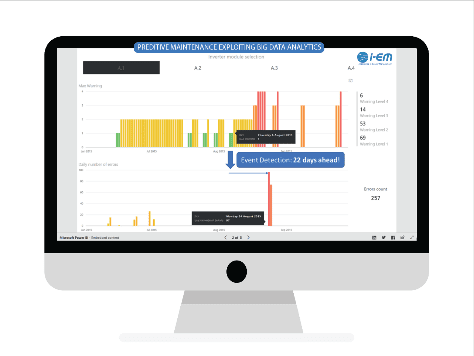
Hydro technology:
In hydropower plants, planned pre-determined maintenance is usually the most adopted maintenance method. Condition monitoring procedures have been often reserved for protection systems, for shutting down the powerplant when a single monitored signal exceeds a-priori thresholds (e.g., bearings with temperature and vibration protection). Following the path of digitization and digitalization revolution, also the hydro-area managers are starting to implement the newest approaches, fully taking advantage of artificial intelligence and big data tools capabilities. Currently, there are just a few examples rolling and running, but they are already very promising. Between them, our i-EM hydro predictive service is currently running and providing alarms notification to hydro operators, with success cases of avoiding stops of generation units (with associated costs estimated between 25 keuro and 100 keuro) twice, and just in 2018 year of activity!
Ring any bells? Look here for specs!
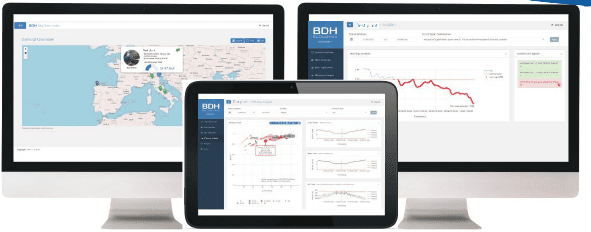
We’ll talk more about our hydro predictive services in the second part of this discussion.
Notes
[1] Butler S. ”Prognostic algorithms for condition monitoring and remaining useful life estimation [Ph.D. thesis]”. Maynooth, Ireland: NUI Maynooth; 2012. (See reference)
[2] H. Bloch and F. Geitner, Machinery failure analysis and troubleshooting, Houston, Texas: Gulf Publishing Company, 1983. (See reference)
[3] R. Ahmad and S. Kamaruddin, ”An overview of time-based and condition-based maintenance in industrial application”, Computers and Industrial Engineering, pp. 135-149, 2012. (See reference)
[4] White Paper, Beyond Standard Monitoring Practice, 3E. (See reference)


